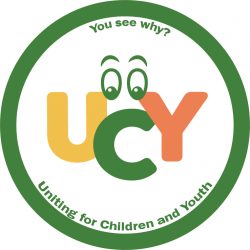Due date: Tuesday, September 18, 2018, midnight
See below for a supplement to the Question 2 that was sent out September 13th to help candidates with their answers.
“If you want to control, you design organizations for accountability.
If you want to accomplish, you design for commitment.”
– Tapscott and Caston, Paradigm Shift
“This era doesn’t call for better management. It calls for a renaissance of self-direction.”
– Daniel Pink, Drive
Formal scheduling, the practice of dividing the school day into fixed chunks of time, is the single greatest impediment to educational innovation.
– attributed to Larry Rosenstock of High Tech High in Beyond Measure
This question is designed to give voters an idea of how visionary and innovative a candidate is and whether or not he or she thinks the industrial education model has outlived its usefulness.
The question is to solicit views about systemic problems. It is not about innovative ideas for solving problems within the current system. It’s about the idea that we need to change education paradigms. It has been observed that nagging problems defying solutions, despite the protracted efforts of capable people, disappear or have easy solutions with different paradigms. Examples are the lengths of the school day and school year that are out of sync with modern family needs. Solutions to the problems of before and after school care, and summer holiday care, are simplified if schools are based on the democratic learning model.
UCY is encouraging a discussion of the purpose of school with its question, “What is school for?” Question 2 is designed to add to this discussion. With it posed from the perspective that public education needs to transition from the industrial education model of managing students to one more fit for today. Candidates who do not believe this need offer ideas on how to address problems such as equity, inclusion and individual needs within the current system.
This question has several parts. To help you plan your answers, the table below the question shows how your responses will be provided for UCY readers.
Question 2
- Do you believe that public education needs to evolve from its industrial management practices to ones more appropriate for today? Y/N
- Do you agree that formal scheduling is a major barrier to systemic innovation? Y/N
- Would you act to establish an OCDSB Systemic Innovation Advisory Committee made up of student, parent, teacher, administrator, ministry, university professor, business and community representatives? Y/N
- If “Y” to 3, would you act to have the committee established in time for systematic field studies to begin in September 2019? Y/N
- Would you support developing a board wide inventory of innovative actions by teachers and principals that require no additional funding, that keep students in their community schools, that adhere to ministry requirements, that promise to help define a new model for education, and that can expand our vision of how ideas that research finds are working can be scaled up to benefit more students? See the Innovation Playlist for how small steps can lead to big changes. Y/N
- Would you help to create partnerships with universities that want to conduct studies of how school boards can transition, with a minimum of disruption and angst, from the industrial model to one that suits today’s needs? Y/N
- What is your vision of the ideal school? This question is to solicit big picture views that may include opinions on such things as age-mixing, the importance of free play, optimum levels of self-direction, choice of curriculum, essential learning needs, optimum learning periods, individual differences, the 4Cs, the skills required for independent lifelong learning, the achievement culture as it relates to mental health, teacher as facilitator of learning, community learning centres, and the types of relationships among students and teachers that are most conducive to learning. Youth voice, equity and inclusion are expected to be topics of future questions and so they might be dealt with on the basis of “more to come later” should candidates wish to include something about them with this answer. This question is very open-ended and could take considerable time to answer thoroughly, if that is even possible. To provide some guidance, focusing on two or three areas with which you feel most familiar, and expressing your thoughts in no more than two pages is perfectly acceptable. The task is to convince voters that you have a deep interest in education and that you have well considered ideas about improving the relevance of public education, and therefore student engagement.
- SUPPLEMENTARY QUESTION. This question is optional. Responses will be posted separately from Question 2. The question: Would you be willing to consider establishing in partnership with a university faculty of education a “Model 21st Century Teaching School” to investigate the potential of the types of learning environments being provided by Liberated Learners and the concept of a full service community learning hub?
Only Y or N answers are required for most questions. Your answer to G will be provided verbatim through a link as with Question 1. The Prodding column of the table is to give voters an idea of how responsive you might be to them if elected. For candidates who intend to be very responsive, these questions offer an opportunity to demonstrate this along with the thoughtfulness of the response constituents might expect from you. How the entry for Prodding will be recorded is still being debated. It may be a Y or N for whether or not prodding was needed to obtain an answer from you, or a number to indicate how much prodding it required.
| Zone ? – Candidates’ Responses to Question 2 | |||||||||
| A | B | C | D | E | F | G | Prodding | Follow-up | |
| Candidate | Y/N | Y/N | Y/N | Y/N, n/a | Y/N | Y/N | Link to answer | Link | |
| Candidate | Y/N | Y/N | Y/N | Y/N, n/a | Y/N | Y/N | Link to answer | Link | |
Background
Here is evidence that we need to be working on more than band-aid solutions to problems.
In addition to the above quotes and linked videos, the following provides more evidence that public education is floundering.
- The Living and Learning report commissioned by the Ontario Government,
- The OISE survey about public attitudes towards Ontario schools,
- The World Economic Forum article and NASA study on how schools kill creativity,
- Concerns over the mental and physical health of young people.
This is the 50th anniversary of Living and Learning and it is still regarded as a highly thoughtful and relevant study. It was published in 1968 and is best known as the Hall-Dennis report, named after its two principle authors. At the time it described the state of education as follows:
“Today, on every side, however, there is heard a growing demand for a fresh look at education in Ontario. The Committee was told of inflexible programs, outdated curricula, unrealistic regulations, regimented organization, and mistaken aims of education. We heard from alienated students, frustrated teachers, irate parents, and concerned educators. Many public organizations and private individuals have told us of their growing discontent and lack of confidence in a school system which, in their opinion, has become outmoded and is failing those it exists to serve.”
In June 2018, the Ontario Institute for Studies in Education (OISE) released the results of a survey it did on public attitudes towards education in Ontario. It found that 50% of people are satisfied or very satisfied with their schools. This tells us 50% are less than satisfied, which is a serious indictment of today’s school systems. It appears that we have made little real progress in fifty years of trying. Even for those who say they are satisfied, things may not be as they appear. The stress on students to obtain high grades is showing signs of producing ill-health, both mental and physical, and high grades are increasingly being seen as unreliable indicators of a person’s 4C attributes – creativity, critical thinking, collaboration and communication. There is also concern that these students are very good at doing as they are told and at writing tests, but they may lack the skills and attitudes necessary for independent living and learning.
There are also socio-economic questions about the 50% of people who are satisfied or very satisfied with today’s schools. Are they the more affluent who provide a range of extras for their children outside of school? Are they the more educated who create a rich learning environment in their homes? Are they the savvier people who know how to get their children into the best programs and the best schools? Research is needed to answer these questions, but it is quite possible that while 50% of students are doing well, we may inadvertently be creating a class system with how we manage public education. In which case we may be providing some students with personal success while not adequately addressing the kind of democracy and environment that will be their futures.
There is a self-directed learning movement underway as evidenced by the democratic school movement, the increasing numbers of unschoolers, and organizations such as the Canadian Coalition of Self-Directed Learners, Liberated Learners, the Alternative Education Resource Organization (AERO), and the Alliance for Self-Directed Education (ASDE). Peter Gray, an evolutionary psychologist, is a professor at the forefront of this approach to learning. His Chicago video and book Free to Learn, along with one of his Psychology Today blog postings give a good overview of the self-directed learning model. People who have never experienced it have a hard time imagining how it works. The distrust of students’ abilities to be responsible learners is the biggest barrier to people appreciating what it does for students.
John Gatto, author of Dumbing Us Down, wrote:
“It is the great triumph of compulsory government monopoly mass-schooling that among even the best of my fellow teachers, and among even the best of my students’ parents, only a small number can imagine a different way to do things.”
John Gatto has what many people might think is a very cynical view of public education today as seen in his video The Reasons For Schooling. Others see him as insightful. The video is recommended viewing, but some people are likely to find it disturbing.
To know of something is not necessarily to understand it or to be able to imagine how it works. To see it in action may not even be enough. You might actually have to live it to believe it, and if you can’t live it, then you have to trust the people who tell you it is working for them. A couple of thoughts to encourage open-mindedness: 1) people who have succeeded in a system are the least likely to see its flaws, and 2) people who have created a mess are the worst ones to oversee the clean-up.
All of the candidates need to give voters hope that they will not simply perpetuate status quo by trying to make things better when they need to be made different.
Supplement to Question 2

